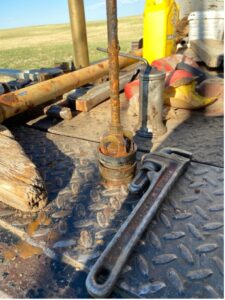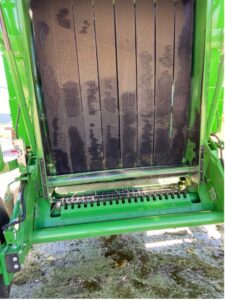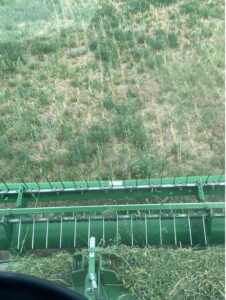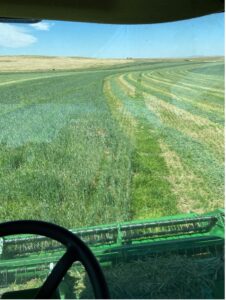Tackling Gophers and Well Rods
#bfrdpwy #aginternship #RightRisk

The sucker rod and the leather collars at the end.
This week we had a well that needed to be pulled up to figure out why it wasn’t pumping water. We opened the pumping rod and to replace the seals at the bottom. After continuous rubbing, up and down, the pipes tend to wear out. Then in the afternoon, I power washed out the baler and swather to get rid of all the old field residue and slow the spread of disease or alfalfa weevils between fields. We had a heatwave come through on Tuesday, reaching 103, requiring us to go make sure the rest of the cattle had enough water for the week. The alfalfa responded well to the heat and grew to its mature stage which meant it was time to cut it.

Inside of the baler after washed.
One thing I have decided is I want to look for a better solution for managing the gophers that live in the pastures and in the irrigated cropland. Because gophers dig tunnels, they leave big mounds and can cause a bumpy ride in the field, or when cutting hay it can cause the swather to plug up from the dirt mounds. The ranches’ solution to controlling them is baiting them with poison balls but I don’t see this as a very efficient process. I would like to see if there is a pesticide spray that could be applied to crops to cause gophers to stay away, detering them without killing them. I think a lot of ranchers see this as a problem in their fields and would benefit greatly.

I gained knowledge about replacing the windmill parts and what to look for when the windmill hasn’t been pumping for a while, learning how to tell when the leathers are worn and when to replace the seals. I plan to help prevent the spread of pests by encouraging myself and others in the industry to take precautions and always clean off equipment before going into a new field. I also understood more about cover crop practices and will hopefully be able to replicate a similar practice in my future. Not only is it a good soil erosion protectant but it is also a beneficial practice to use when controlling weeds.

Cutting the old triticale to promote new growth for alfalfa.
Throughout the week, there were a few questions I had: what are better windmill well pipe substitutes, what is the protein content of alfalfa versus triticale, why are second and third cuttings important, and how can the swather be improved so it cuts alfalfa faster.
Submitted by: Samuel Warneke
Edited by: GrowinG Internship Team

